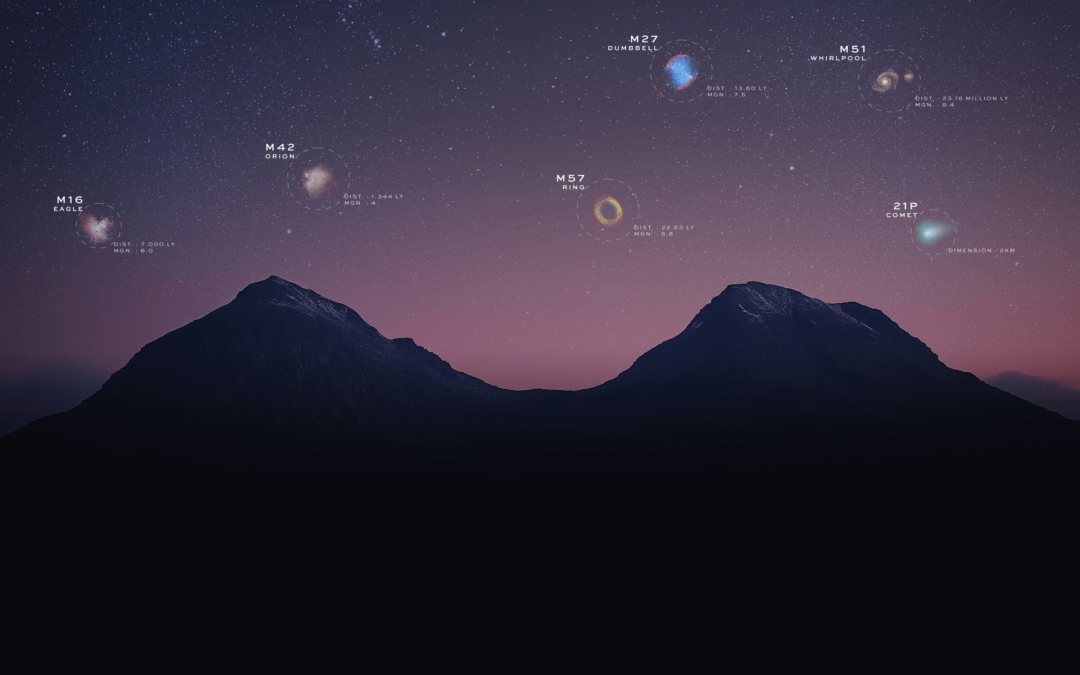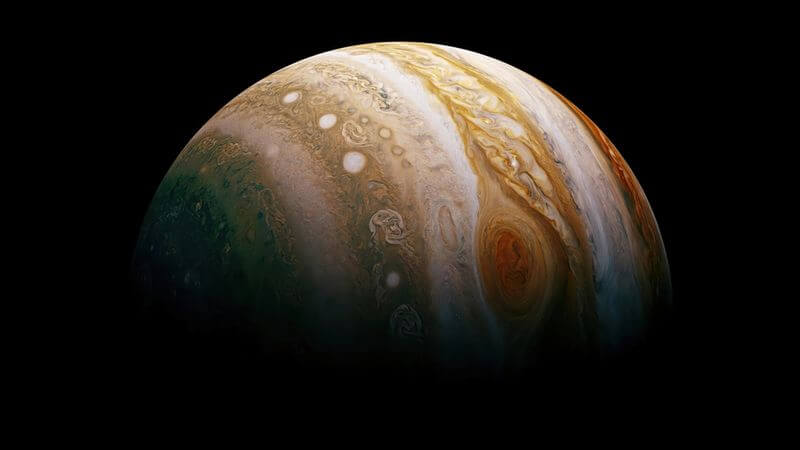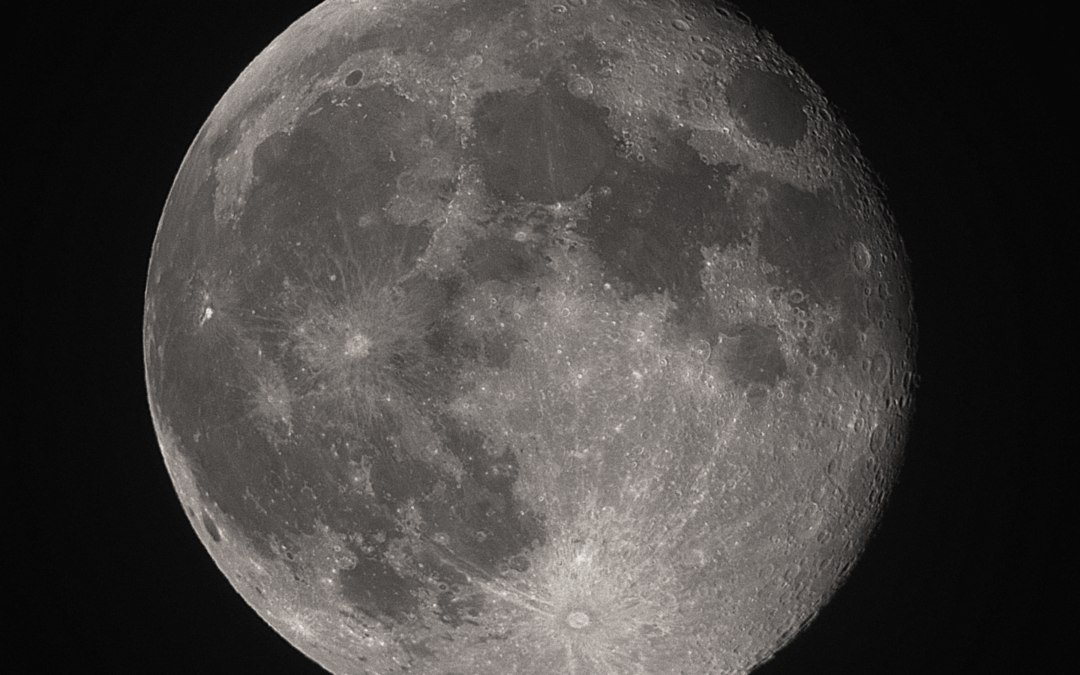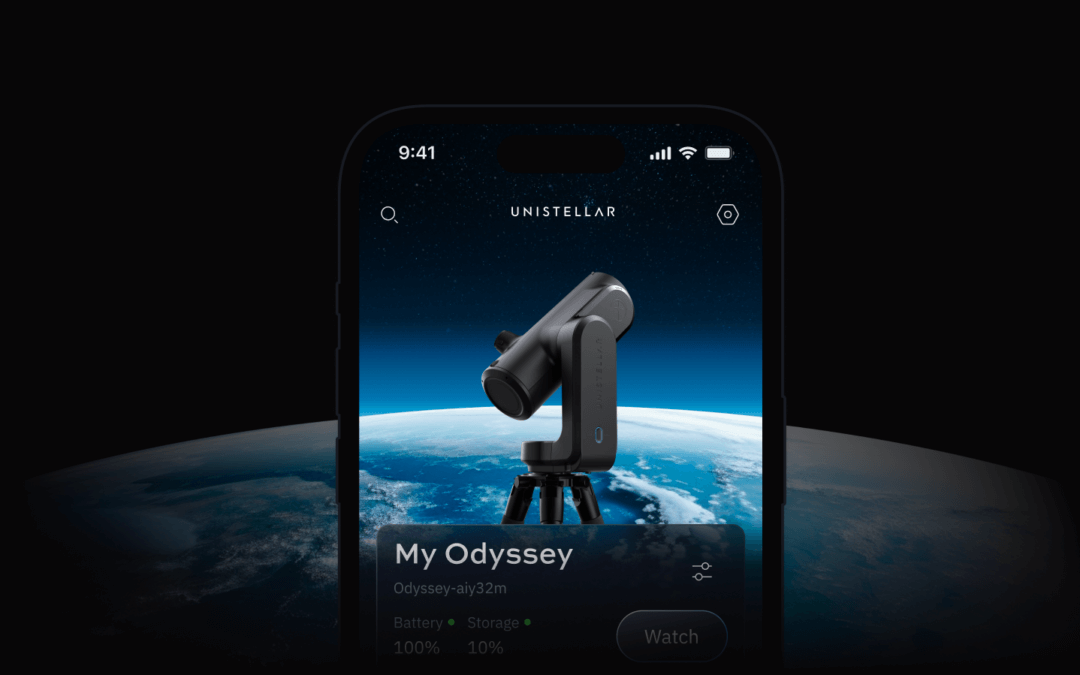June and July cover Asteroid Day — and there are two Near-Earth asteroids (NEAs) poised to join the celebration! Asteroids 25916 (2001CP44) and 215188 (2000NM) will be close enough for Citizen Astronomers to find them with their telescopes. As a bonus, both NEAs are great candidates for Unistellar observers to help refine their orbits and model their 3D shapes.
The two asteroids are relatively large. 25916 (2001CP44) is estimated to be 5.68 kilometers in diameter, and 215188 (2000NM) is around 2.6 km. For reference, an impact from a one km asteroid could be enough to destroy a continent; the Chicxulub impact that wiped out the dinosaurs 66 million years ago was caused by an asteroid 10 km wide.
With such large space rocks zooming by Earth, it’s important to understand the 3D shapes of NEAs like these for planetary defense. If an asteroid were on a path to hit our planet, one solution would be to deflect it by launching a rocket that would change its trajectory. The more we know about the size and shape of an asteroid, the better our chance at success.
As of today, we know of more than 25,000 Near-Earth asteroids, but have shape models for fewer than 100. That’s why scientists at Unistellar and the SETI institute use Unistellar Network observations to refine the orbits of Near-Earth asteroids and build their 3D shapes.
Both NEAs will be visible all June and July, and observing asteroids like these is a great way to join in with the Asteroid Month celebrations, which happen around the world. Asteroid Month is the month-long celebration leading up to Asteroid Day on June 30, an international, U.N.-sanctioned event to raise awareness about the risks of asteroids and their role in our Solar System.
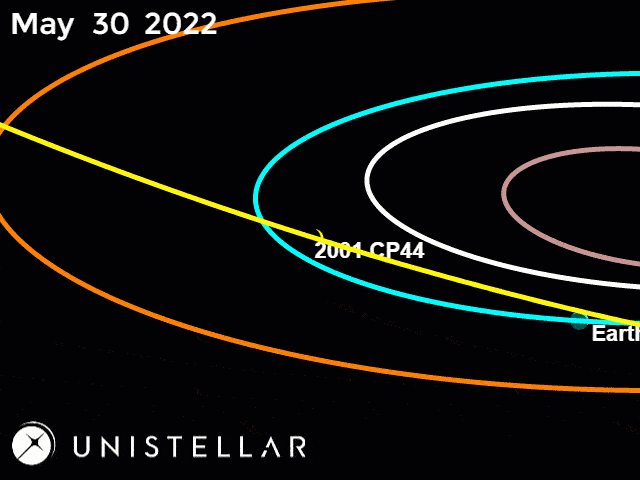
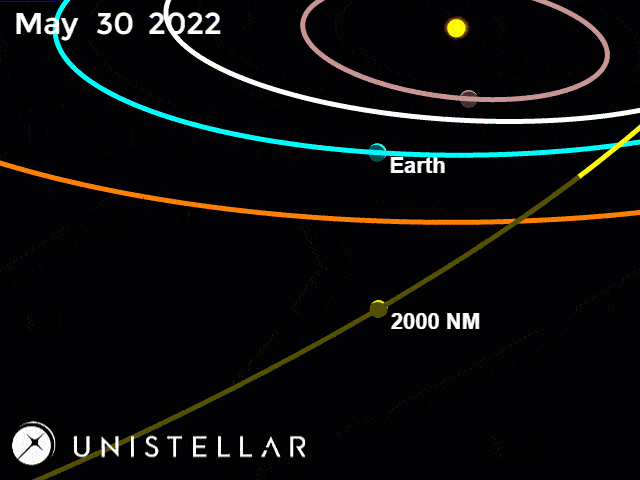
(Left) Orbit of 2001CP44 by Tony Dunn. (Right) Orbit of 2000NM by Tony Dunn.
Observe 2001CP44 and 2000NM with your eVscope
Observing 2001CP44 and 2000NM with your eVscope while they’re visible these June and July is simple. The two asteroids are in the Unistellar app, so all you have to do is follow the steps in science observation mode. Follow the How-to Guide for “A. The Planetary Defense target is in the Unistellar app’s database” for details.
The recording parameters for this campaign are as follows:
- Exposure time: 3971 ms
- Gain: 25 dB
- Duration: 40 minutes
Three observations are necessary. At the end of your acquisition, be sure to follow the prompts to record a dark frame with the dust cap on.
If you have any questions, please reach out to us at [email protected].
Further readings
3 Reasons to observe this month
Every month, discover three unmissable celestial events to observe with your Unistellar telescope.
Observing Eclipses on Jupiter: Cosmic Spectacles Through a Telescope
The latest Unistellar App Update, version V3.0, is now live. Explore a smooth stargazing experience !
Unistellar Community Included In Multiple Scientific Papers
Did you know Unistellar Citizen Astronomers are often cited in published scientific papers? Find out how you can contribute too!
What Are the Names of All the Full Moons in 2024?
Discover the enchanting names of the full moons in 2024. Delve into the unique character of each lunar spectacle and embrace the allure of the night sky.
New Unistellar App Update: Version 3.0
The latest Unistellar App Update, version V3.0, is now live. Explore a smooth stargazing experience !
What to Observe This November: Open Star Clusters and More
These Halloween deep-sky objects will add some light to those dark, spooky nights. Treats, tricks, and telescopes await!

